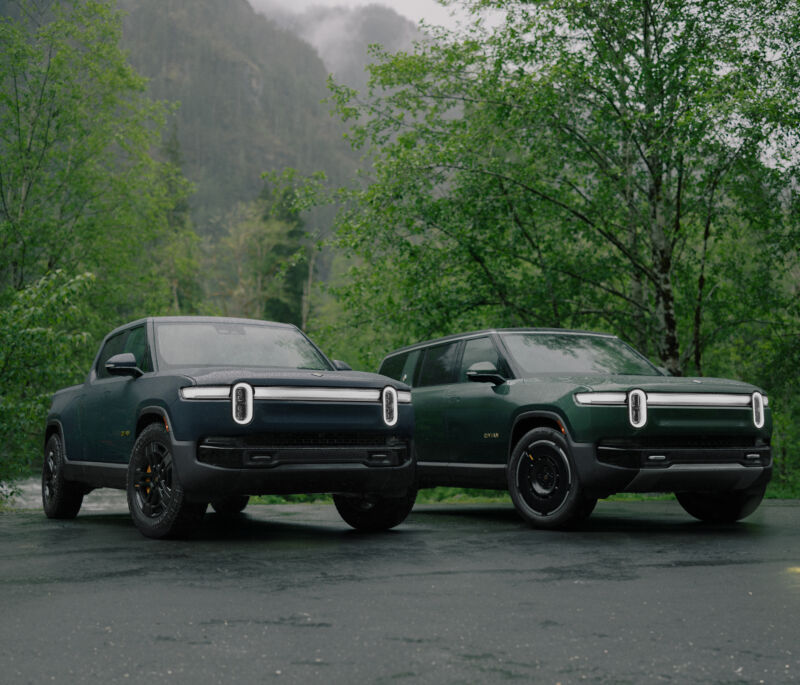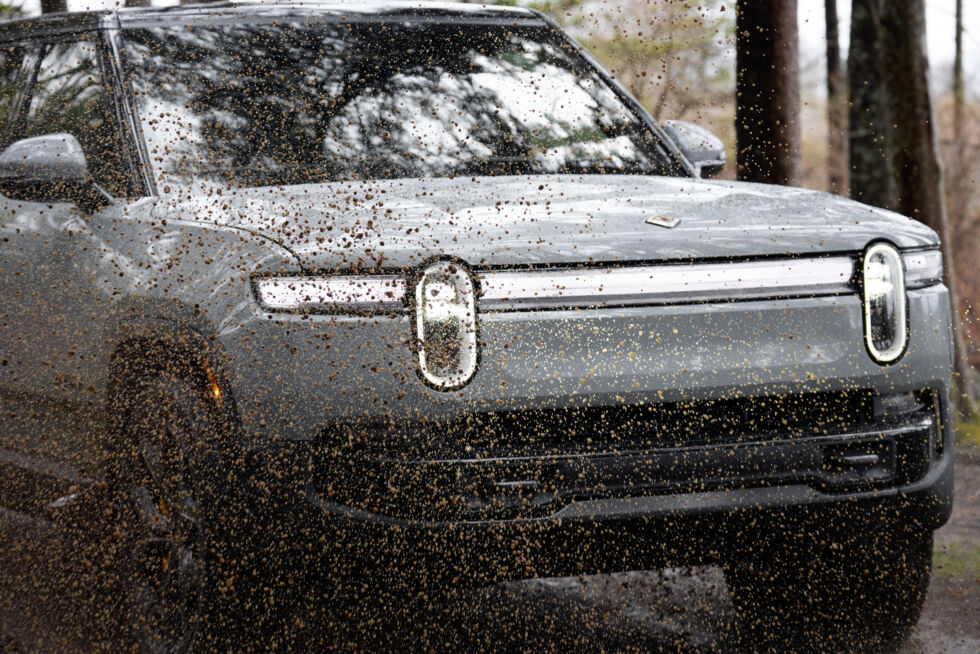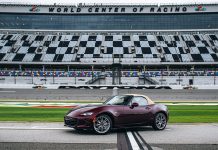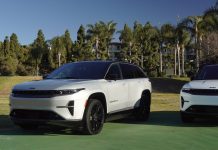The EV startup has reengineered the R1 to make it better to drive, easier to build.

In rainy Seattle this week, Rivian unveiled what it’s calling the “Second Generation” of its R1 line with a suite of mostly under-the-hood software and hardware updates that increase range, power, and efficiency while simultaneously lowering the cost of production for the company. While it’s common for automotive manufacturers to do some light refreshes after about four model years, Rivian has almost completely retooled the underpinnings of its popular R1S SUV and R1T pickup just two years after the vehicles made their debut.
“Overdelivering on the product is one of our core values,” Wassym Bensaid, the chief software officer at Rivian, told a select group of journalists at the event on Monday night, “and customer feedback has been one of the key inspirations for us.”
For these updates, Rivian changed more than half the hardware components in the R1 platform, retooled its drive units to offer new tri- and quad-motor options (with more horsepower), updated the suspension tuning, deleted 1.6 miles (2.6 km) of wiring, reduced the number of ECUs, increased the number of cameras and sensors around the vehicle, changed the battery packs, and added some visual options that better aligned with customizations that owners were making to their vehicles, among other things. Rivian is also leaning harder into AI and ML tools with the aim of bringing limited hands-free driver-assistance systems to their owners toward the end of the year.
- Usually, an automaker waits four years before it refreshes a product, but Rivian decided to move early. Rivian
- The R1 interior can feel quite serene. Rivian
- Perhaps you’d prefer something more colorful? Rivian
- An exploded view of a drive unit with a pair of motors. Rivian
- There are two capacities of lithium-ion battery, and an optional lithium iron phosphate pack with 275 miles of range is on the way.
- Rivian’s R1 still looks friendly amid a sea of scary-looking SUVs and trucks. Rivian


While many of these changes have simplified manufacturing for Rivian, which as of Q1 of this year lost a whopping $38,000 on every vehicle it sold, the company has continued to close the gap with the likes of BMW and Mercedes in terms of ride, handling, comfort, and efficiency.
On the road in the new R1
We drove a new second-gen dual-motor 665 hp (496 kW), 829 lb-ft (1,124 Nm) R1S Performance, which gets up to 410 miles (660 km) of range with the new Max Pack battery, out to DirtFish Rally School in Snoqualmie in typically rainy Seattle weather. On the road, the new platform, with its revised suspension and shocks, felt much more comfortable than it did in our first experience with an R1S in New York in 2022.
The vehicle offers modes that allow you to tackle pretty much any kind of driving that life can throw at you, including Sport, All Purpose (there’s no longer a “Conserve” mode), Snow, All-Terrain, and Soft Sand, alongside customizable suspension, ride feel and height, and regen settings. The R1S feels far more comfortable from all seating positions, including the back and third-row seats. There’s less floaty, car-sick-inducing modulation over bumps in All-Purpose, and Sport tightens things down nicely when you want to have a bit more road feel.
One of the big improvements on the road comes from the new “Autonomy Compute Module” and its suite of high-resolution 4K HDR cameras, radars, and sensors that have been upgraded on the R1 platform. The new R1 gets 11 cameras (one more than the first gen), with eight times greater resolution, five radar modules, and a new proprietary AI and ML integrated system that learns from anonymized driver data and information taken from the world around the vehicles to “see” 360-degrees around the vehicle, even in inclement weather.
While the R1S has had cruise control since its launch, the new “Autonomy” platform allows for smart lane-changing—something Rivian calls “Lane Change on Command” when using the new “Enhanced Highway Assist” (a partially automated driver assist), and centers the vehicle in marked lanes. We tried both features on the highways around Seattle, and the system handled very rainy and wet weather without hesitation, but it did ping-pong between the lane markers, and when that smart lane change system bailed out at the last minute, the move was abrupt and not confidence-inspiring, since there was no apparent reason for the system to fail. These features are not nearly as good as the latest from BMW and Mercedes, both of which continue to offer some of the most usable driver-assist systems on the market.
With the new R1 software stack, Rivian is also promising some limited hands-free highway driver-assistance features to come at the end of the year. While we didn’t get to try the feature in the short drive to DirtFish, Rivian says eye-tracking cameras in the rearview mirror will ensure that drivers have ample warning to take over when the system is engaged and needs human input.
ARS VIDEO
How Lighting Design In The Callisto Protocol Elevates The Horror
Off-road capabilities remain stellar

Rivian products truly shine off-road—especially when the road is mucky, sticky, dirty, rocky, and wet. Most R1 products won’t see more dust than they collect while dropping kids off at the local baseball field. But thanks to the kind folks at DirtFish, we were able to go off-road with both a base R1T—a dual-motor configuration with 533 hp (397 kW), 610 lb-ft (827 NM), and a Rivian-estimated range of up to 420 miles (676 km) of range with the Max Pack—and an R1S tri-motor, with 850 hp (633 kW), 1103 lb-ft (1,495 Nm), and around 410 miles of range with the Max Pack.
We took the R1T on a short but technical off-road loop that showed off its wading depth, suspension, and, most importantly, 20 percent faster computing power. The prior generation struggled with very slow, technical climbs on soft and loose ground, hunting with braking and throttle to get the vehicle through. You’d sometimes have to put in a touch more throttle than you’d want to get through some technical terrain, which, in the wrong circumstances, would leave you stuck. The new platform, with its fewer but faster ECUs and upgraded suspension, handled these kinds of situations with aplomb, fording deep water and powering up and over articulating bumps with ease and grace.
We tested the R1S tri-motor on a muddy, wet dirt track, putting it into rally mode, where it handled quick direction changes and driver inputs with nary a complaint as all that power was shunted automatically between the wheels that were slipping to the ones with grip in the loose but sticky mud. With most of the dynamic control systems turned off, it was very easy to get the R1S sideways on loose surfaces without feeling like you’d send it into the woods. The electronic safety systems are unintrusive enough to offer the right balance of fun within safe bounds.
Subtle visual changes, new colors and connectivity
Rivian’s design team also had a hand in the latest updates to the R1 platform, and the new tri- and quad-motor versions get a couple of new colors, new interior colors and fabrics, an electronically tinted glass roof, new headlights, new charging light indicators at the front and rear of the vehicle, and darker burnished trim options inside and out. (Both the glass roof tint and the darker trim options were mods that customers were doing on their own after purchasing first-gen R1s.)Advertisement
- The ride for the middle and third row in the R1S was not at all good, but the tweaks Rivian made to the platform appear to have solved that. Rivian
- The R1 interior uses a thoughtful mix of materials that are interesting to touch. Rivian
- Plaid carpets are a bit less boring than solid colors. Rivian
- There’s a new drive mode screen. Abigail Bassett
- The new drive mode page in Snow mode. Abigail Bassett
- The drive mode page when Soft Sand is engaged. Abigail Bassett
- Drive modes, plus the car’s status. Abigail Bassett
- All-terrain drive mode. Abigail Bassett
- Sport mode, which will come in handy in the next image. Abigail Bassett
- Rivian took the “drag strip” thing a little seriously, bringing along tire warmers. Abigail Bassett

To go along with the subtly updated exterior and interior bits, Rivian also did some work on the audio system and connected car systems inside. Apple Music with Dolby Atmos surround sound will be available, as will Google Cast, so you can watch everything from Netflix to YouTube on the infotainment screen while you charge or camp. Rivian also leveraged Unreal Engine to create new, unique infotainment and driver-assistance graphics.
While we didn’t get a chance during our short trip to Washington to drive the tri- or quad-motor versions on the road, we did put both the R1T and R1S quad-motor on a drag strip outside of Seattle. These 1,025 hp (764 kW) beasts put down 0–60 times in the sub-3-second range—Rivian claims a sub-2.5-second time.
While all of these upgrades will certainly make Rivian customers happy, it’s clear that the changes are mostly designed to cut production costs, with a side benefit of a 15 percent reduction in the R1’s lifetime carbon footprint.
Rivian made a lot of buzz when it showed off the R2 and R3 recently, although we have a two-year wait for the first of those to go into production. The new tri-motor setup is likely to become available in the top version of the R3, and the increased modularity of all the underpinnings will significantly cut the cost of production for Rivian—pushing it closer to profitability.
A video of the quad-motor Rivians launching at the drag strip.
The second-generation R1S starts at $75,900, and the R1T starts at $69,900. Tri-motor versions start at $99,900 with the Max Pack battery, and Rivian hasn’t yet announced pricing for the quad-motor versions. Second-gen dual-motor configurations will be available for order as of June 6, and tri-motor and quad-motor formats are due later this year.




